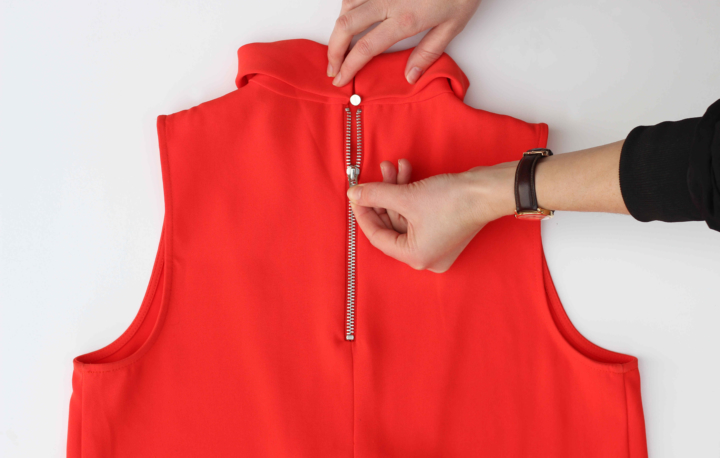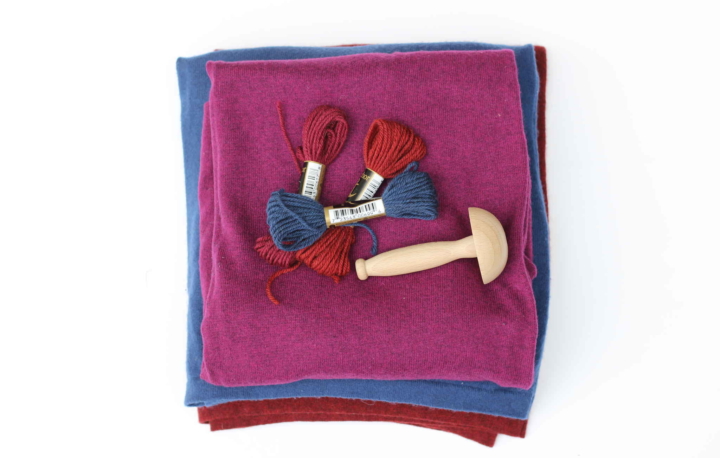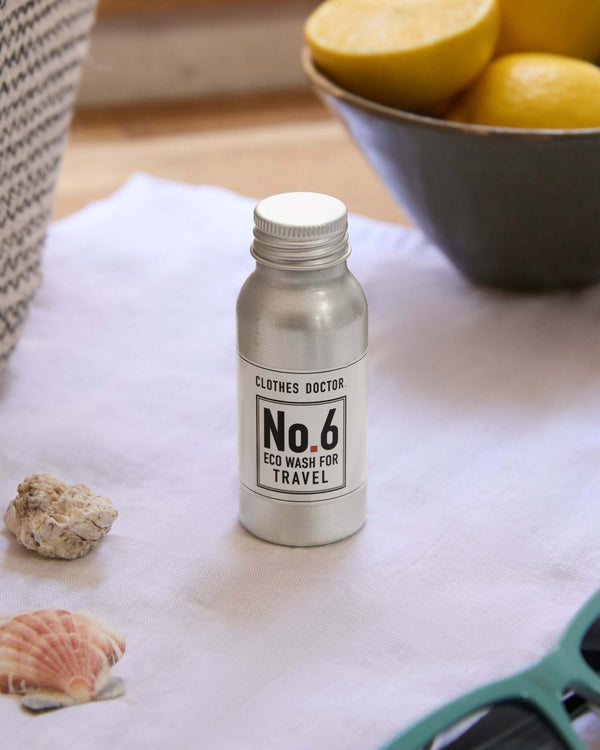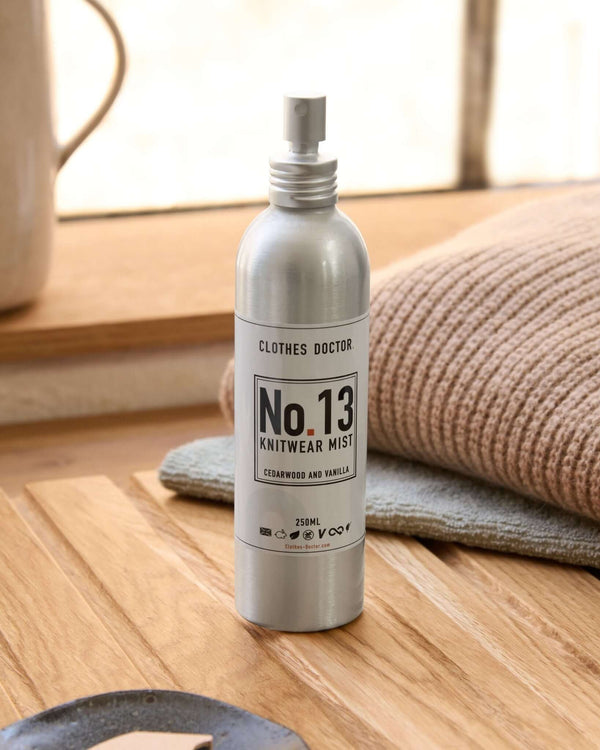Did you know that if you keep your clothes in circulation for just nine months longer you’ll reduce the carbon and water footprint by up to 30%?
How about the fact that the UK sends 300,000 tonnes of used clothing to landfill every year, where thanks to synthetic fibres and modern manufacturing processes, it doesn’t biodegrade for hundreds of years?
We teamed up with Pebble Magazine to put together a list of the best tips and practical advice to mend your clothes and keep them in your life for longer and out of the bin.
WHILE ETHICAL FASHION IS ONE WAY OF COMBATING THE DISASTROUS CONSEQUENCES OF OUR FAST FASHION HABITS, MAKING AND MENDING AND KEEPING CLOTHES GOING IS ANOTHER EQUALLY IMPORTANT SOLUTION - AND ARGUABLY ONE THAT’S CHEAPER AND KINDER TO THE PLANET.
We don’t need to produce a lot more clothes.
We need to mend and upcycle, swap and sell what we’ve got between us, so we’re working with online clothing maintenance service Clothes Doctor, to talk about 5 simple ways to make your clothes last longer.
Clothes Doctor's founder, Lucinda O'Connor says: "'The recent suggestion of a tax on new garments by the government has raised awareness of the scale of the environmental problem caused by our treatment of clothing as disposable goods. Clothes Doctor was founded to help our customers love their clothes for longer. Few people know how to sew these days but with our service we can all maintain and enjoy a great looking wardrobe, in the words of Vivienne Westwood: 'Buy less, choose well and make it last.'"
5 SIMPLE WAYS TO MAKE YOUR CLOTHES TO LAST LONGER
1. MEND THAT ZIP
Thinking of chucking something because the zip is stuck? Hold on there. A stuck zip shouldn’t defeat you. If it’s stuck, it’s most likely rusty or has something stuck in its teeth.
If there is surrounding fabric stuck, be gentle. Use your fingers or tweezers to pull it away without tearing the material. If it’s still stuck - the insider’s tip? A pencil. Yep, run a graphite pencil over the teeth on both sides, focusing on where the teeth meet. It should start to glide open. If it doesn’t, try household items with more lubrication - we’re talking soap or lip balm rather than industrial cleansers.
Gently pull the zip down, applying the product that is working and continue until you’ve got it unstuck.
If it’s actually broken, pop it over to us.
2. HOW TO FIX A FALLEN HEM WITH HEMMING WEB
Don’t panic, you don’t need to be able to sew. In a move that would leave most grandparents gobsmacked, modern consumers chuck clothes rather than try and mend them, even when it’s something simple like sorting out a hem. Don’t be one of them. Embrace your skills and save your clothing from the bin.
Heard of hemming web? It’s basically iron-on double sided sticky tape for clothes. It will work on any hem. Here’s how:
Take your clean piece of clothing that needs mending. Turn it inside out and cut a piece of the hemming web to cover the fallen hem. Place the web between the two pieces of material and check you can’t see the hemming web.
Place a damp cloth over the clothing (and use an extra tea towel if you’re working with anything delicate). Press the area with a very hot iron for about 30 seconds.
While nothing beats sewing up a fallen hem, this is a quick and temporary fix that gets your favourite piece of clothing back in circulation rather than lounging forgotten at the back of the cupboard. If that doesn't work - send it to Clothes Doctor for a proper stitch.

3. WASH YOUR CLOTHES LESS, WASH THEM BETTER
"The new rule for modern washing? Wash your clothes when they need it rather than in between every wear"
We’ve all heard about buying less and buying better, but there’s a big argument to washing them less and washing them better too.
While most mainstream washing powders and machines recommend washing at 30 or 40 degrees to save energy the other thing to consider is microplastics and microfibres. Washed out of our synthetic clothing in every wash, it’s thought that in the UK we wash half a million tonnes of microfibres into the sea a year and 35% of these come from our clothing - which is 16 times more than recently banned microbeads (Ellen Macarthur Foundation).
Use a GuppyFriend bag which is like a laundry bag that goes into the wash. It not only traps microfibres in the bag but also protects delicate clothing from snagging.
Get it right in the washing machine. Read those care labels and adjust your wash. Hubbub has a great downloadable guide to those washing symbols here.
Wool doesn’t need to be washed that often and some recommend that you wait months before washing new jeans.
The new rule for modern washing? Wash your clothes when they need it rather than in between every wear.
Air dry your clothes where possible to cut down on energy consumption and more microplastics being shed.

4. LEARN HOW TO DARN A HOLE
Darning isn’t just something they did in the war. It’s a really useful skill that sorts out small holes in clothing, meaning you can keep on wearing them rather than having to recycle them.
To darn a hole, you will need: a darning needle, thread in a matching colour and thickness to whatever it is you’re mending and a darning mushroom.
Place the hole over the darning mushroom and sew a few stitches in the undamaged material to secure your mending. Stitch across the hole horizontally.
Next, sew vertically over the hole - working the thread over and under your existing stitches. Continue until you have created a grid that fills the hole. Leave a long end of thread that you can work into the grid, so no knots get caught and the work gets unravelled.
Clothes Doctor’s team are masters of six different darning techniques, so will be able to help if you get stuck - simply enquire now and we'll get back to you!

5. INVEST IN QUALITY AND LOOK AFTER IT
If you go down the capsule wardrobe route or invest in an ethical fashion piece that will last a lifetime, not just the next catwalk trend, you’ll want to look after it. That means more than just not leaving it screwed up in a corner of your bedroom.
Wooden hangers help clothes keep their shape hanging up. Stretchy clothes should be folded and kept flat rather than hung. Invest in natural alternatives to mothballs if you’re keeping things at the back of cupboards and wardrobes for months on end. Cedar chips and lavender bags work to repel moths.
Need more help in mending your clothes? Have a look at our repairs, alterations and cleaning services.
*For an exclusive discount offer have a look at the original article on Pebble Mag
Written by Clothes Doctor and Georgina Wilson-Powell







